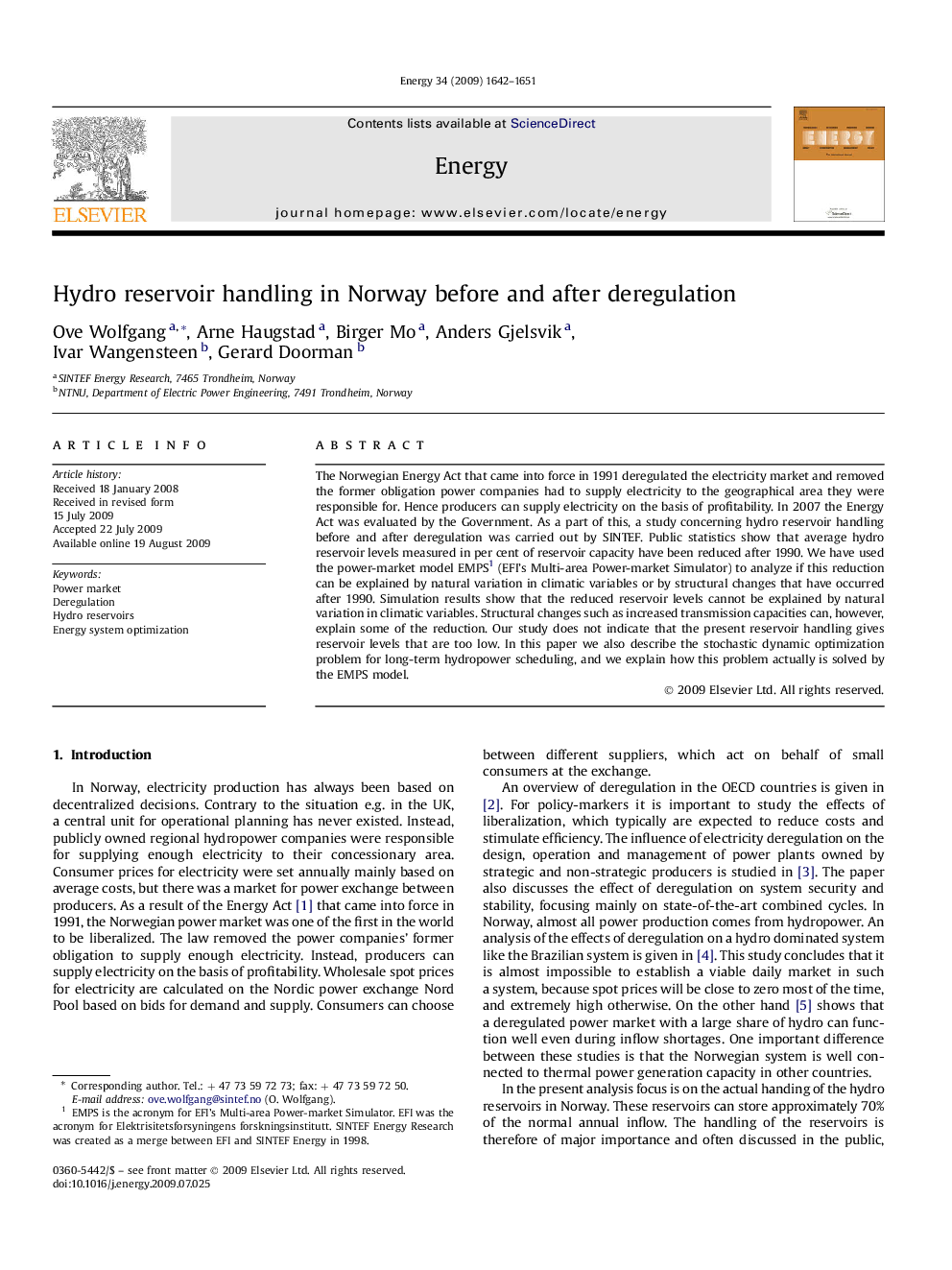| Article ID | Journal | Published Year | Pages | File Type |
|---|---|---|---|---|
| 1735635 | Energy | 2009 | 10 Pages |
The Norwegian Energy Act that came into force in 1991 deregulated the electricity market and removed the former obligation power companies had to supply electricity to the geographical area they were responsible for. Hence producers can supply electricity on the basis of profitability. In 2007 the Energy Act was evaluated by the Government. As a part of this, a study concerning hydro reservoir handling before and after deregulation was carried out by SINTEF. Public statistics show that average hydro reservoir levels measured in per cent of reservoir capacity have been reduced after 1990. We have used the power-market model EMPS1 (EFI's Multi-area Power-market Simulator) to analyze if this reduction can be explained by natural variation in climatic variables or by structural changes that have occurred after 1990. Simulation results show that the reduced reservoir levels cannot be explained by natural variation in climatic variables. Structural changes such as increased transmission capacities can, however, explain some of the reduction. Our study does not indicate that the present reservoir handling gives reservoir levels that are too low. In this paper we also describe the stochastic dynamic optimization problem for long-term hydropower scheduling, and we explain how this problem actually is solved by the EMPS model.
